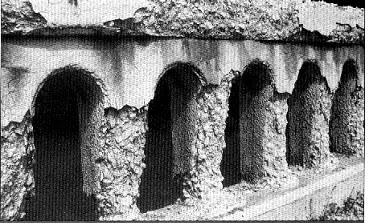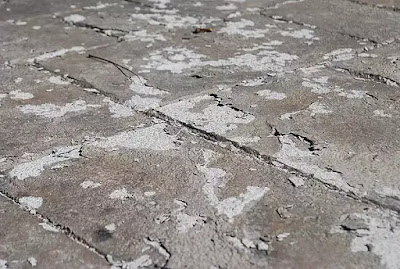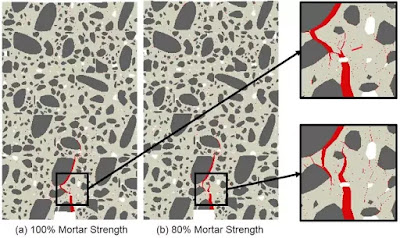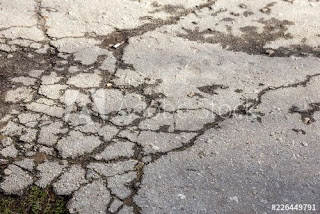 |
FAILURE OF STRUCTURE DUE TO FREEZING AND THAWING IMAGE SOURCE: GOOGLE || IMAGE BY- FAILUREMECHANICS |
Freezing and thawing have a bad effect on the durability of concrete. This effect is especially important in colder regions. This effect is less visible in Indian weather.
Table of Contents
Definition of Freezing and Thawing on Concrete
Capillary pores are present in concrete and these pores are full of water. In the cold region or due to excessive winter the pore water is freeze and make ice, due to that the volume of pore water increase. Due to these phenomena In the capillary pore, the radial pressure increases and the cracks in the concrete become wider.
Thus, due to the freezing of water and the thawing of water, concrete disintegrate. Thus the strength of concrete is reduced. Breakdown of concrete due to freezing of water and thawing of water, this phenomenon is known as freezing and thawing of concrete.
Effect of Freezing and Thawing on Concrete
In a fresh concrete lot of water present. If such concrete temperature going less compare to freezing temperature 0 degree Celsius, the independent ice lens is formed, with the cooling the water size increases by 9%, so that the excess water comes out. These freeze water Pressure is applied to the surface, and fresh concrete is permanently damaged in the concrete.
Therefore in a cold region try to maintain concrete temperature is more than a freezing temperature.
 |
FREEZING AND THAWING EFFECT ON CONCRETE
IMAGE SOURCE: GOOGLE || IMAGE BY- CIVILENGINEERINGDAIRY |
When concrete is cast in a cool region where more than concrete surface is exposed to the atmosphere. And freezing and thawing action occur in concrete. Then this concrete is majorly distress(disintegration) due to frost action.
Eg. Parapet, rod curb, hydraulic structures members which are slightly above the water level.
The freezing of water in solid concrete produces a pressure of up to 14 Mpa. If this pressure exceeds the tensile strength of concrete, then there are cracks in the concrete.
 |
FREEZ THAW CYCLE IMAGE BY-RESEARCHGATE |
Freezing begins in the large holes on the surface, gradually moving toward smaller holes. Gel Pores are very small so they are freezing only if the temperature – 78 ° C. Therefore, there is no ice in the gel pore.
where the freezing and thawing the process takes place in wet conditions, Should be Used appropriate air-entraining agents to increase the durability of the concrete. When concrete is used in a grade lower than M50, concrete should have the following air content.
| Entrained Air Percentage To Resist Frost ( IS : 456-2000) | |
| Nominal maximum size of aggregate (mm) | Entrained air percentage |
| 20 | 5+1 or 5-1 |
| 40 | 4+1 or 4-1 |
Causes of Freezing and Thawing on Concrete
- Freezing and thawing increases with increasing pores of the concrete.
- It is increased with increasing Moisture content.
- It is increased with increasing humidity.
- It is increased with increasing The number of thaw cycles increases.
- Freezing and thawing effect faster on the horizontal surface, which retains water.
- It is increased in porous aggregates.
- Air entrainment decreases Freezing and thawing.
 |
| FREEZING AND THAWING |
Prevention Measures Tips for Freezing and Thawing
- Keep a low w / c ratio as possible.
- Do enough air entertainment.
- Proper compaction of concrete.
- Use of durable and insoluble(less pores) aggregates.
- Do proper curing of concrete before freeze-thaw
- Provide proper drainage by providing proper slope
ALSO READ :

